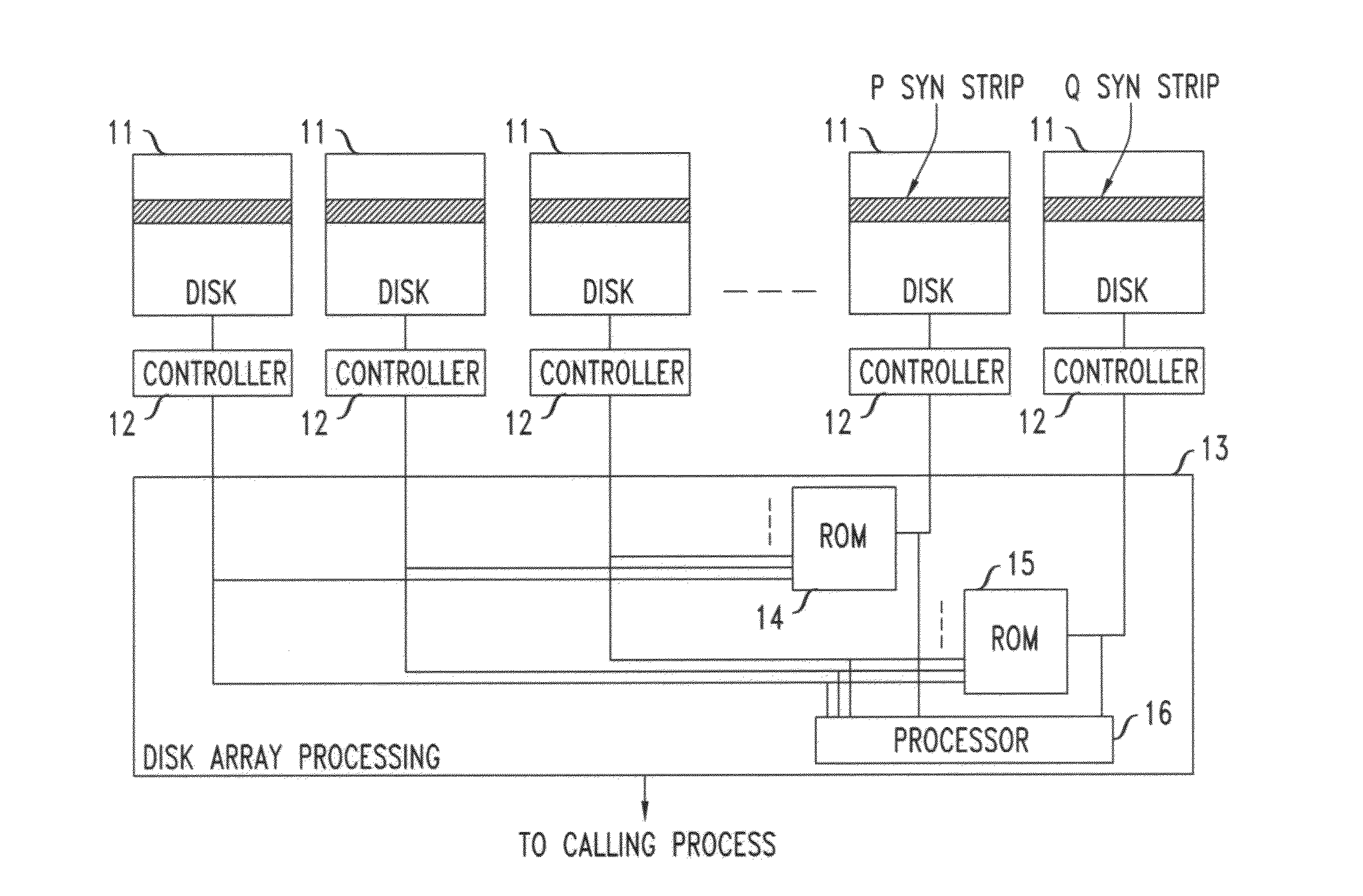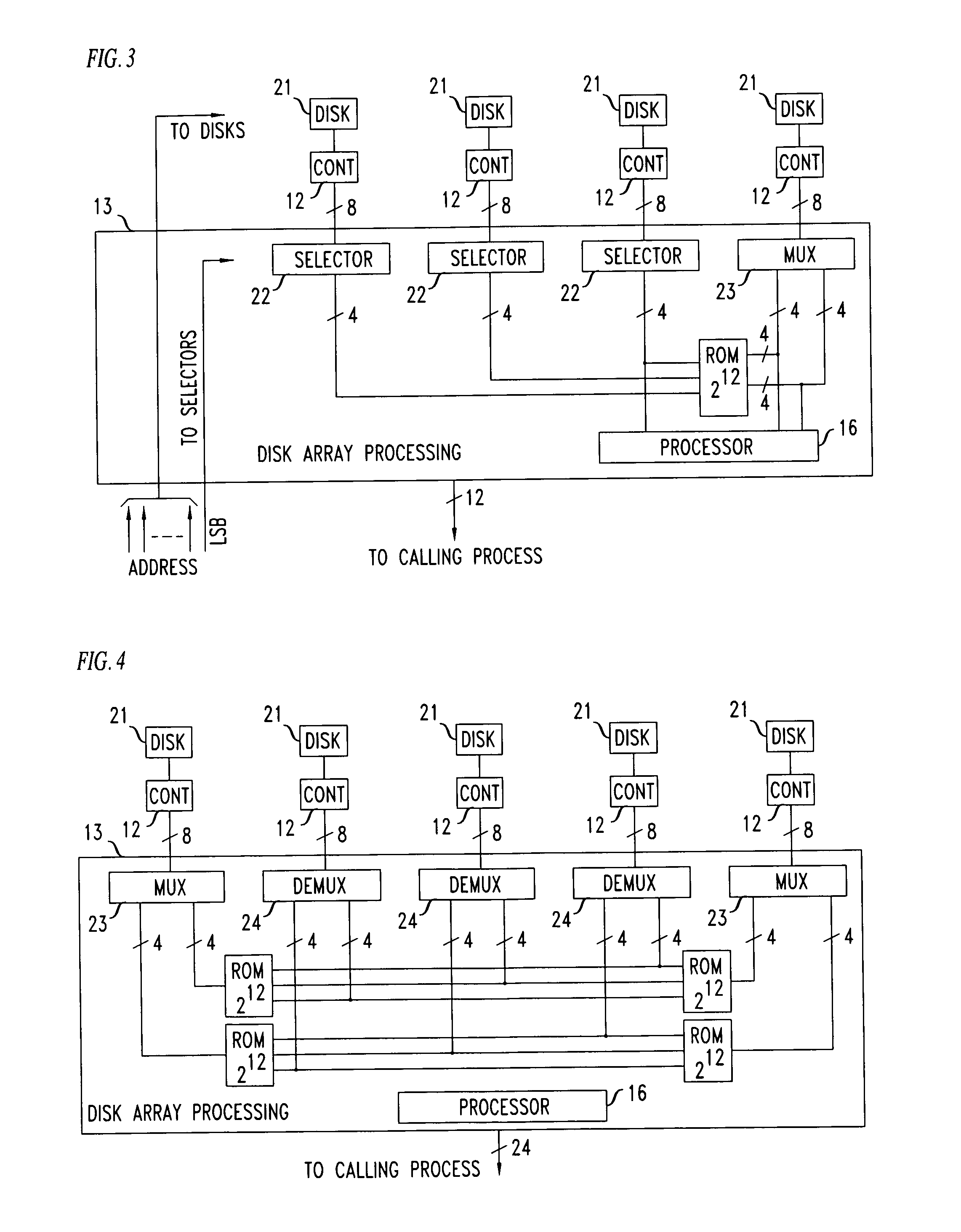Lookup-based Galois field operations
a lookup and galois technology, applied in the field of processing circuits, can solve the problems of uncompromised techniques, undetected read errors, and error said to be an erasure error, so as to reduce the required size of the lookup table or table, and reduce the complexity and/or necessary time for computing
- Summary
- Abstract
- Description
- Claims
- Application Information
AI Technical Summary
Benefits of technology
Problems solved by technology
Method used
Image
Examples
Embodiment Construction
[0015]As indicated above, in both RAID 5 and RAID 6 systems the redundant data can be viewed as degenerates of a Reed-Solomon error-correcting code that is based, for example, on Galois field GF(28). That is, the RAID 5 parity check corresponds to an RS(n,n−1) code, where n is the number of drives in the array, and the RAID 6 P and Q signatures are a RS(n,n−2) code.
[0016]Under the assumption that only one read error occurs that is not caught by controllers 12, in accord with the principles disclosed herein, data from the syndrome parity strip P is employed by array controller 13 as part of all read requests, and parity P′ is computed in accordance with equation (1), and compared to the read parity P. When P′≠P it is concluded that an undetected read error has occurred, in which case data from syndrome strip Q is also used. The actual location of the error bit is determined, and the correct value is computed and substituted for erroneous data. This allows the error to be silently cor...
PUM
 Login to View More
Login to View More Abstract
Description
Claims
Application Information
 Login to View More
Login to View More - R&D
- Intellectual Property
- Life Sciences
- Materials
- Tech Scout
- Unparalleled Data Quality
- Higher Quality Content
- 60% Fewer Hallucinations
Browse by: Latest US Patents, China's latest patents, Technical Efficacy Thesaurus, Application Domain, Technology Topic, Popular Technical Reports.
© 2025 PatSnap. All rights reserved.Legal|Privacy policy|Modern Slavery Act Transparency Statement|Sitemap|About US| Contact US: help@patsnap.com



